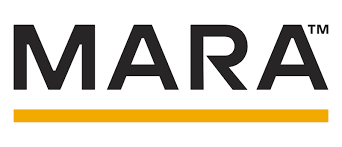
Correlation between Currencies in Forex Trading Market
If you are already in the Forex market and stocks trading in different currencies, you must already have known that particular currencies are correlated. Any kind of shift in one’s value affects another’s. To become a professional, skilled ETF trader, every investor must have a thorough understanding of that.
Correlation in currencies
You may have come to realize that when some currency pairs rise it makes another pair fall. Opposite of this scenario can also happen as some currency pairs are negatively correlated. If you are skilled, you can turn this correlation into a great advantage and make some significant progress in the analytical process.
Most currency pairs are interconnected with a thin thread which cannot be identified without a careful inspection. However, those who deal with multiple assets can easily feel the impact of currency pair correlations. Now, let’s get into the details of this sophisticated section.
What is a Currency Correlation?
The term correlation refers to statistical evaluation of two securities with respect to each other. With a currency correlation factor, people understand whether two pairs proceed in the opposite, or same direction, or totally in random direction over a definite range of time. During trading any currency, every trader should remember that as these currencies are being traded in pairs, correlation factors must be considered while dealing with multiple assets.
Unless you are planning on dealing with just a single pair at a time, you must perceive how various pairs impact one another. Failing to understand the correlation factor can increase overall risk as you might open different trades in the positively correlated pairs.
If by any chance you cannot realize the pattern of your work or the behavior of the currency pair you are about to invest in, it is better to avoid trading. To maneuver several pairs at the same time by using one of the most sophisticated platforms, saxotrader you need a strong understanding of the currency pair correlation.
So, for your own sake, don’t be ignorant and educate yourself as much as possible about the correlation factor.
Coefficient of Correlation
It is estimated that the correlation coefficient in currency pairs remains between +1 and -1. PPC or perfect positive correlation refers that a couple of pairs that will sweep in the same direction all the time. A perfect positive correlation is the one that has a coefficient of +1.
PNC or Perfect Negative Correlation happens when the coefficient is -1. It implies that the pairs will shift in the opposite direction all the time.
If the coefficient is 0, the movement between pairs is termed to have zero correlation. Both those pairs are free, random, and independent from one another. So, try to use this knowledge while you are taking trades in multiple assets.
Currency Correlation sheet
If you dig a little deep, you will find correlation tables which are showing relations between currencies in different time zone. Those who are struggling to choose the right currency pair can use the correlation table. Have a detailed look at the correlation table and see which currencies are being moved by which pairs. It will provide you with the right information about what currencies you should keep inspecting while dealing with a pair. Before diversifying your portfolio, you have to identify the correlated currency pair.
The rookies might think the correlation factor never changes. But nothing is absolutely in the investment world. The skilled ETF traders always use authentic sources to identify the correlation factor as they know the coefficient factors with the change in the economic performance of a certain country. So, always keep in mind that you can’t print a correlation sheet and use it rest of your life. You have to use an updated datasheet and take trades by evaluating important correlation factors.





